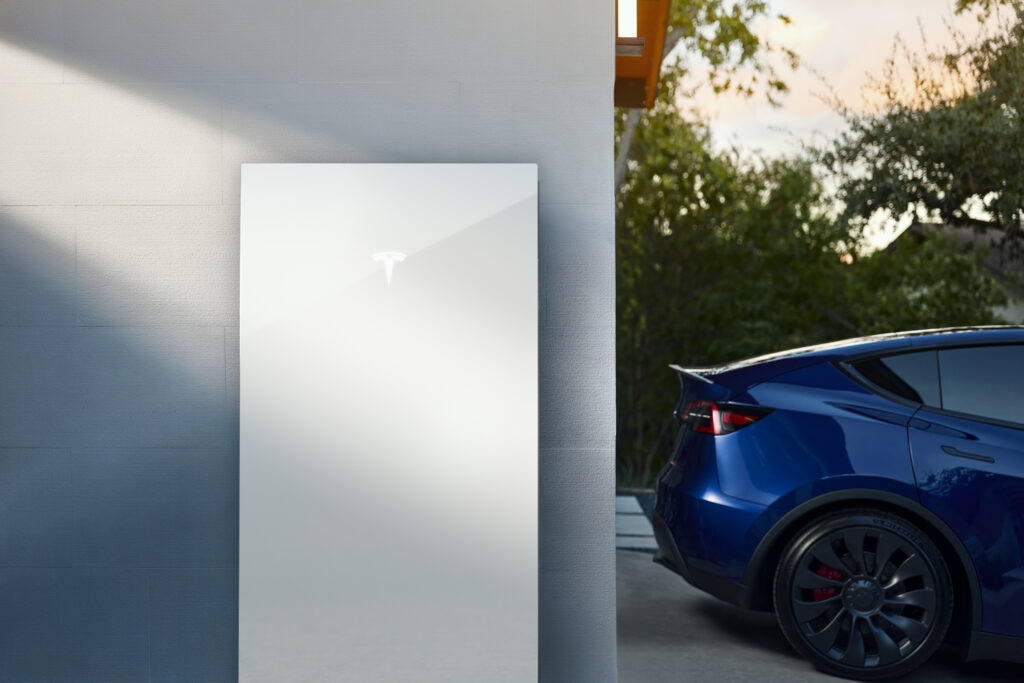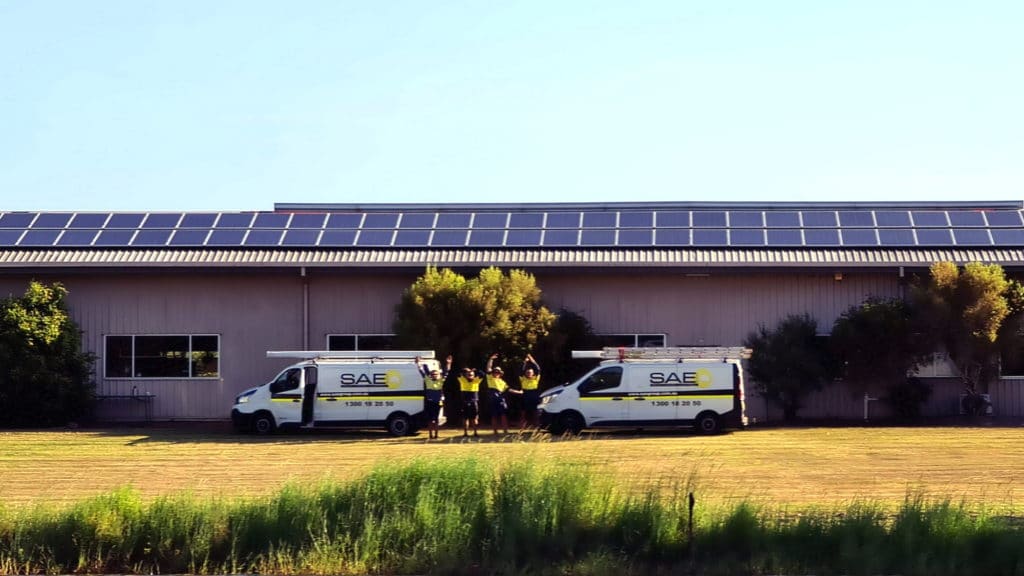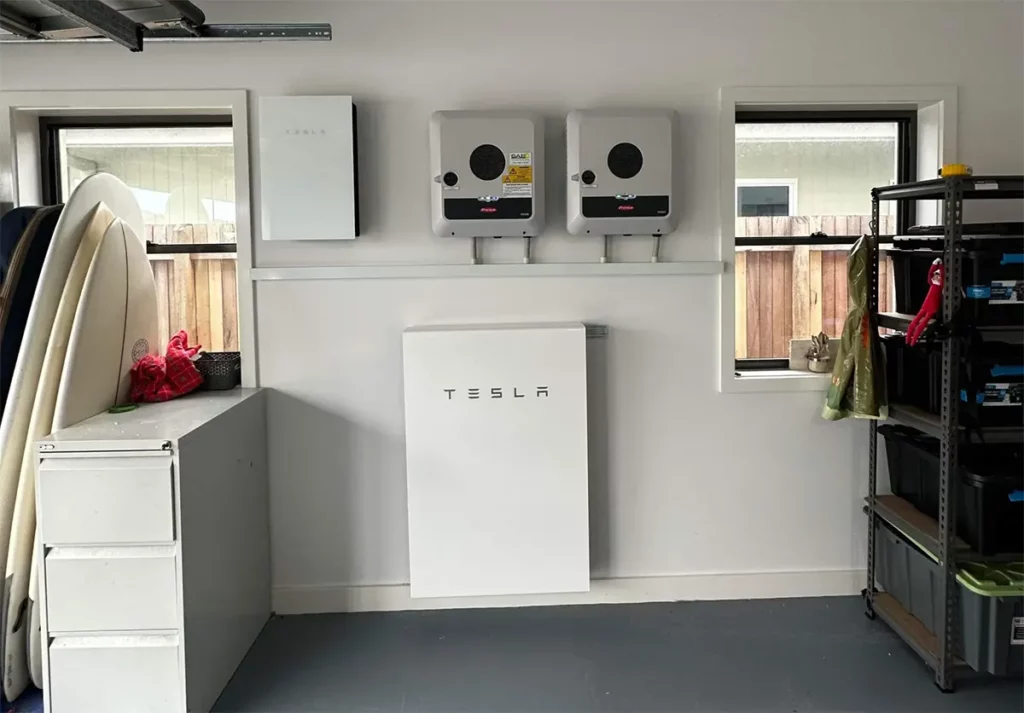Solar Battery Recycling – What Happens to Depleted Solar Batteries?
Home » Solar Battery Recycling – What Happens to Depleted Solar Batteries?

Solar energy storage has taken a front seat in the renewable energy sector’s evolution, emphasising the critical need for Solar Battery Recycling. As households across Australia increasingly rely on solar power, the market for energy storage solutions has seen substantial growth. This development is prominently characterised by the use of large-scale batteries or interconnected battery banks designed to capture and store energy produced by solar panels for later use.
This trend of harnessing solar power presents multiple significant advantages. Firstly, it maximises energy savings by allowing households to store solar power, enabling them to efficiently use it when needed rather than drawing from the more expensive grid. Secondly, it helps offset consumer feed-in tariffs by reducing reliance on the grid during peak times when electricity rates skyrocket. Lastly, it provides a continuity of supply, an essential factor for locations with unreliable grid connections.
Understanding Your Choices
The landscape of household energy storage brims with options. Traditional lead-acid batteries are known for their reliability and cost-effectiveness, while lithium-ion batteries are praised for their longevity and capacity. Furthermore, alternatives like nickel-cadmium, nickel-metal hydride, and the more technologically advanced flow batteries present additional choices. These might come with higher initial investments but could be justified depending on the specific energy storage requirements and long-term usage strategies of a household.
Dealing With Unusable Solar Batteries
The end-of-life management of these batteries poses an environmental conundrum. The prospect of a surge in discarded solar batteries in the future makes the establishment of robust solar battery recycling programs a pressing concern. One Australian company is already spearheading this initiative, introducing a recyclable power source that promises more environmental benefits of recycling batteries. Helen Lewis, from the Australian Battery Recycling Initiative (ABRI), advocates for accelerated government-industry discussions to formulate a dedicated battery recycling scheme.
“The absence of regulations mandating solar battery recycling is a glaring oversight,” Lewis argues, pointing out the lengthy near-decade process required to implement electronic waste recycling programs in the past. The call for urgency underscores the environmental stakes and the need to learn from previous challenges.
Responsible disposal methods for solar batteries (such as lithium battery recycling in Australia) are available, although they require public awareness and participation. Local governments typically provide waste management systems, allowing residents to dispose of batteries and similar items safely. It’s vital for individuals to reach out to these offices and adhere to proper disposal guidelines, contributing to environmental preservation efforts.
Given the environmental concerns, the benefits of solar battery storage in good condition are even more pronounced. Efficient battery storage systems allow homeowners and businesses to maximise their solar electricity usage, significantly reducing the carbon footprint associated with conventional energy sources. Moreover, by maintaining the health of solar batteries through proper care and usage, individuals can extend their lifespan, delay the recycling process, and ensure that the technology’s ecological and economic advantages are fully realised. This proactive approach, in turn, contributes to a more sustainable energy future.
Delving Into the Numbers
The statistics from the Australian Battery Recycling Initiative are a cause for concern, highlighting that approximately 8,000 tonnes of lithium-ion batteries end up as waste annually. This figure is projected to soar to 150,000 tonnes in the next two decades, propelled partly by the escalated use of substantial home solar batteries. This situation is a clarion call for immediate action, emphasising the need for sustainable practices now more than ever.
A detailed look at lead-acid batteries, often found in solar energy systems, reveals that they should never be discarded with household waste or recycling. Doing so risks contaminating various recycled materials, negating the recycling efforts and posing environmental hazards. Fortunately, these batteries have a silver lining – they are 98% recyclable. Their lead, plastic, and acid contents can be reclaimed and repurposed into a myriad of products, including guide posts, cables, and even cleaning agents.
Why Is Recyclability Presenting an Issue?
Solar batteries, while advantageous for energy-saving, consist of materials considered hazardous, such as acids and heavy metals like cadmium, cobalt, iron, lead, nickel, and zinc. The recyclability of these materials varies; for instance, a lead-acid battery is nearly entirely recyclable. This high recyclability rate not only alleviates environmental strain but also has economic implications, as the metals within the batteries are valuable resources. Therefore, recycling batteries centres often offer compensation for used batteries, providing a financial incentive alongside the environmental benefit apart from known solar battery benefits.
How Does the Recycling Process Work?
Replacing a battery module must be undertaken with care, ensuring the old unit ends up at a certified solar system battery recycling station. Lithium batteries, in particular, require separate recycling processes due to their composition and potential hazards, such as fire or explosions, if mishandled. Moreover, the system’s overall longevity doesn’t negate the possibility of individual cells failing prematurely. Each cell, regardless of whether it’s part of a larger module or a singular unit within a battery bank, demands proper recycling or disposal to mitigate environmental harm.
Present solar battery recycling capabilities within Australia are somewhat limited, primarily accommodating lead-acid batteries. The rise in lithium battery usage signals a need for expanded facilities and procedures. Other types of batteries currently need to be shipped abroad for proper recycling, implicating further environmental and logistical considerations. However, the landscape is likely to adapt, driven by technological innovations, the proliferation of battery-powered devices and vehicles, and enhanced environmental regulations.
As the use of solar panels in extreme weather conditions grows, the need for efficient battery recycling intensifies. Batteries in these environments endure additional stresses like temperature fluctuations and physical strain, leading to more frequent replacements. This trend highlights the urgency for expanded recycling facilities and new methods tailored for batteries exposed to harsh weather. Proper recycling is crucial to prevent environmental harm and align with solar energy’s sustainability goals, necessitating advancements in recycling infrastructure to support the evolving landscape of renewable energy.
A Word From the Experts
For those on the fence about solar battery storage, professional guidance can make all the difference. Navigating the complexities of battery technology and solar power requirements is no small task. SAE Group is equipped to provide the insights you need, helping you weigh the potential for significant savings on your energy bills against the upfront investment in solar technology so you have to stop wondering how to dispose of batteries in Australia. We’re here to assist every step of the way, from initial inquiries to the moment your solar system becomes operational and beyond, and even through scheduled solar system maintenance. For an in-depth, no-obligation consultation, don’t hesitate to reach out. Let’s explore what solar power can do for you.








